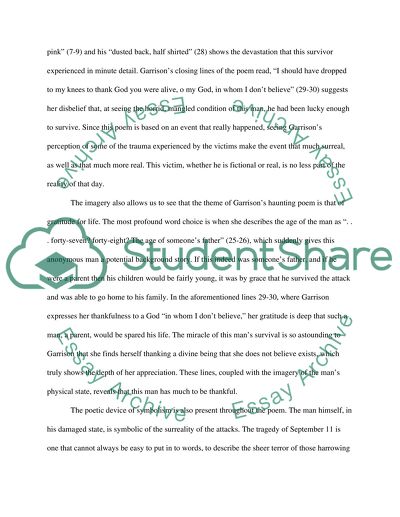Cite this document
(Poetry Critical Analysis: Article Example | Topics and Well Written Essays - 1000 words, n.d.)
Poetry Critical Analysis: Article Example | Topics and Well Written Essays - 1000 words. Retrieved from https://studentshare.org/social-science/1472995-poetry-critical-analysis-i-saw-you-walking-by-deborah-garrison
Poetry Critical Analysis: Article Example | Topics and Well Written Essays - 1000 words. Retrieved from https://studentshare.org/social-science/1472995-poetry-critical-analysis-i-saw-you-walking-by-deborah-garrison
(Poetry Critical Analysis: Article Example | Topics and Well Written Essays - 1000 Words)
Poetry Critical Analysis: Article Example | Topics and Well Written Essays - 1000 Words. https://studentshare.org/social-science/1472995-poetry-critical-analysis-i-saw-you-walking-by-deborah-garrison.
Poetry Critical Analysis: Article Example | Topics and Well Written Essays - 1000 Words. https://studentshare.org/social-science/1472995-poetry-critical-analysis-i-saw-you-walking-by-deborah-garrison.
“Poetry Critical Analysis: Article Example | Topics and Well Written Essays - 1000 Words”, n.d. https://studentshare.org/social-science/1472995-poetry-critical-analysis-i-saw-you-walking-by-deborah-garrison.


